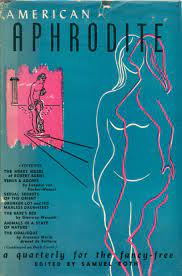
Samuel Roth, Columbia University Rare Book and Manuscript Library
Protest against sex censorship, BeeMarsh BeePhoto
“Congress shall make no law respecting an establishment of religion, or prohibiting the free exercise thereof; or abridging the freedom of speech, or of the press; or the right of the people peaceably to assemble, and to petition the Government for a redress of grievances.”
~ The First Amendment
Although the First Amendment was written to protect freedom of speech, the debate on whether obscenity should be included as “self-expression” has been around since the mid-1800s.


In 1957, Samuel Roth was accused of violating the Comstock Act because he mailed a book with literary “erotica”.

Samuel Roth, Columbia University Rare Book and Manuscript Library
“All ideas having even the slightest redeeming social importance – unorthodox ideas, controversial ideas, even ideas hateful to the prevailing climate of opinion – have the full protection of the guaranties.”
~ The United States Court before the case, referring to the First Amendment's protections
He argued that indecent materials and depictions are artistic expressions rather than obscenity, and are protected by the First Amendment, but the Court henceforth deemed all graphic material as “obscene”.

The book in question, American Aphrodite

Potter Stewart, Associated Press
I shall not today attempt further to define the kinds of material I understand to be embraced within that shorthand description ["hard-core pornography"], and perhaps I could never succeed in intelligibly doing so. But I know it when I see it...
~ Potter Stewart, United States Supreme Court Justice, referring to cases of obscenity, like the Roth case
The outcome of the Roth case frowned upon freedom of expression, and all media was now micromanaged by the United States Supreme Court. These obscenity laws later influenced conservative ideas and movements.